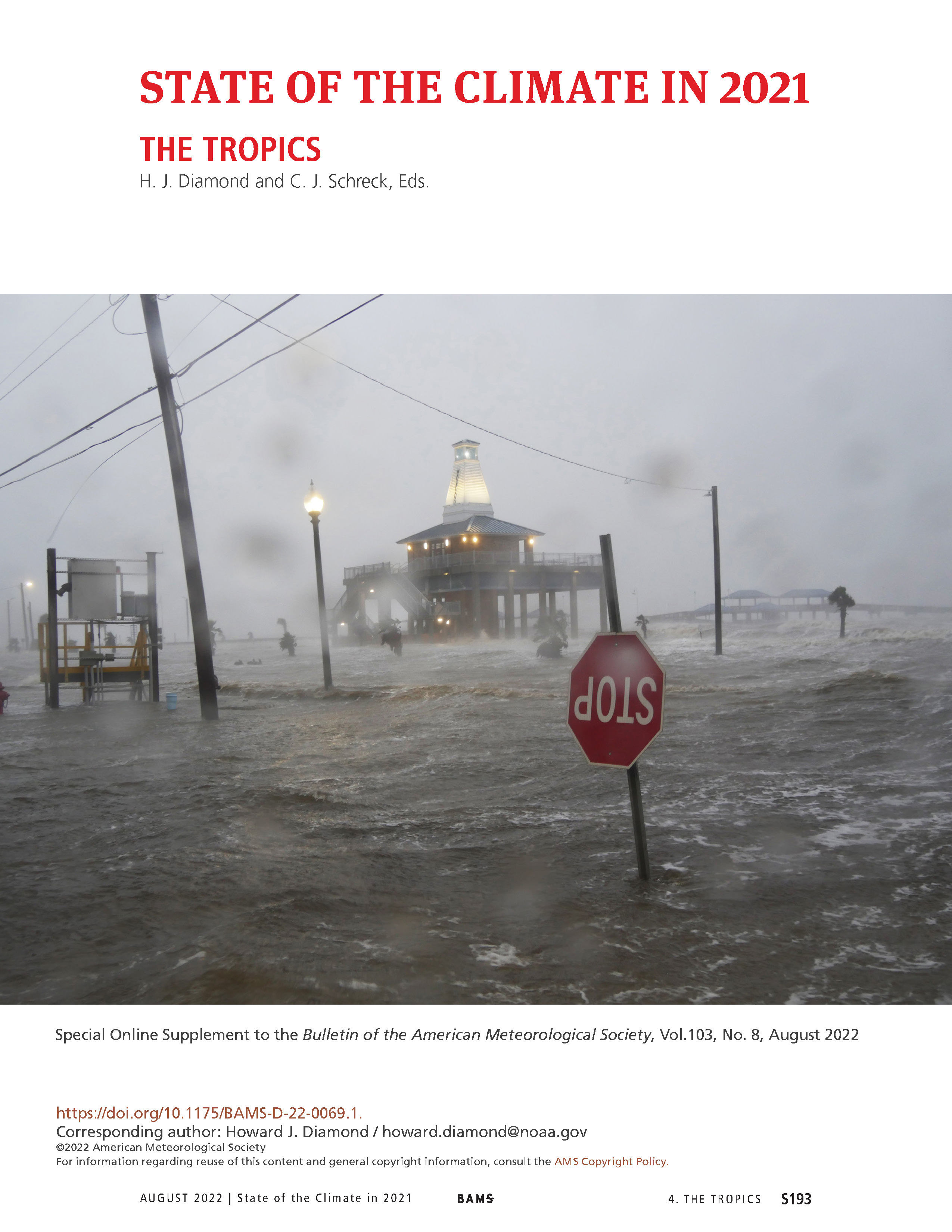State of the Climate 2021 Published
September 2, 2022
The 2021 edition of the annual State of the Climate Report was published and released on August 31, 2022. The report, compiled by NOAA’s National Centers for Environmental Information (NCEI), is based on contributions from scientists from around the world. It provides a detailed update on global climate indicators, notable weather events, and other data collected by environmental monitoring stations and instruments located on land, water, ice, and in space. This is the 32nd annual assessment, now known as State of the Climate, published in the Bulletin of the American Meteorology Society since 1996. This year’s report is based on contributions from more than 530 scientists from over 60 countries around the world and reflects tens of thousands of measurements from multiple independent dataset. It provides the most comprehensive update on Earth’s climate indicators, notable weather events and other data collected by environmental monitoring stations and instruments located on land, water, ice and in space.
As a supplement to the Bulletin, its foremost function is to document the status and trajectory of many components of the climate system. ARL’s Dr. Howard Diamond served as the Lead Editor for the Tropics Chapter. Among its findings, the Tropics Chapter of the report documented, for 2021:

Cover of the Tropics Section of the State of the Climate. Hurricane Ida hit near the Louisiana and Mississippi border on August 29, 2021 bringing high
winds, flooding and a dangerous storm surge. © Warren Faidley, Getty
- There were 97 named tropical storms during the Northern and Southern Hemisphere storm seasons, well above the 1991–2020 average of 87.
- Seven tropical cyclones reached Category 5 intensity on the Saffir–Simpson Hurricane Wind Scale.
- The North Atlantic hurricane basin recorded 21 named storms, the third most for the basin, behind the record 30 cyclones in 2020 and 28 in 2005.
- Category 4 Hurricane Ida was the most impactful storm in the Atlantic. At $75 billion (U.S. dollars) in damage, Ida was the costliest U.S. disaster of 2021 and the fifth most expensive hurricane on record since 1980.
- Super Typhoon Rai was the third-costliest typhoon in the history of the Philippines causing about $1 billion (U.S. dollars) in damages and more than 400 deaths.
Other report findings are summarized by NCEI, and indicate record levels of greenhouse gas concentrations, record high levels of ocean heat and global sea level, and tropical cyclone activity recorded well above average.
The State of the Climate report is a peer-reviewed series published annually as a special supplement to the Bulletin of the American Meteorological Society. The journal makes the full report openly available online. NCEI’s high-level overview report is also available online.

